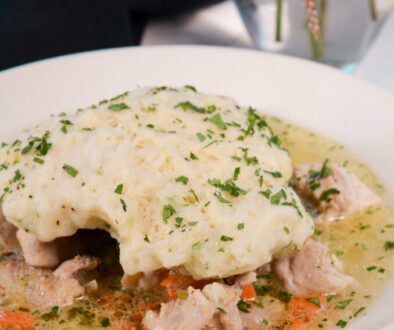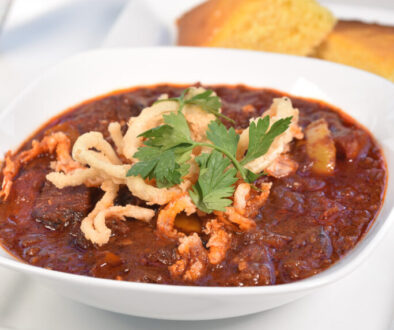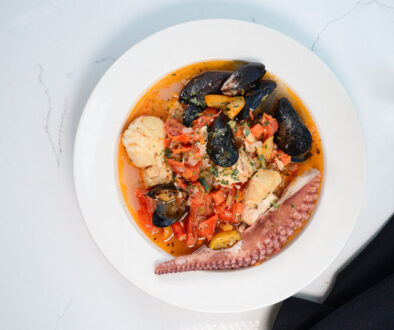One-Pot Meals: Reducing Culinary Carnage
The most important person in any professional kitchen is the dishwasher—without them chaos and disaster reign. The dishes pile up, prep doesn’t get done on time, and the dining room can’t get reset to feed more hungry guests. This is the downfall of most home cooks, as they don’t have someone to do the dirty work and reduce the pot and pan pileup. There is an answer for the home cook, and fall is the perfect time to implement it: one-pot cooking. But I must confess even my one-pot dishes tend to leave a trail of flotsam and jetsam reminiscent of ancient shipwrecks.

One-pot dishes have another benefit and that is consolidation of flavor. Many restaurant dishes are built by layering separately composed components and unifying them on the plate with sauces or garnishes. One-pot dishes often yield results greater than the sum of the ingredients. Think back to your childhood lasagna, beef stew, pork and sauerkraut, tuna noodle casserole. Okay, maybe not the last one. One-pot meals are an efficient way to utilize scraps, leftovers, and meal remnants. The downside is that without culinary discipline and discernment these dishes can become a dumping ground more akin to a North Jersey landfill than a soul satisfying meal.
Casseroles and stews can be the lawless Wild West of the culinary realm. Chili is a dish that when offered by an acquaintance brings trepidation and gastrointestinal fear; it can have friendship-defining ramifications. Beans are a staple in east coast chili; in the southwest putting beans in chili can have catastrophic consequences from concerned friends and family staging an intervention in some locales, with exes, mobs’ torches, and pitchforks possibly summoned. I like making chili with leftover roast beef or brisket, and the use of beans depends on my mood and who I’m cooking for. Chili is a broad canvas for the aspiring culinary artist to paint with, but people: neither frozen corn nor canned green beans should ever go in chili.
Chicken and dumplings may be my all-time favorite meal. The term dumpling means different things even in neighboring northeast states. I have encountered three different dishes when ordering in restaurants: slippery dumplings, softball-size drop dumplings, and the third type is an Amish variant that is more like chicken pot pie. I grew up on softball-size drop dumplings, also colloquially known as floaters. One of these can feed a family of four for a month. Slippery dumplings, aka sinkers, are a hybrid of egg noodles and drywall: thick and chewy and the perfect antidote to a snowstorm.


Every culture has a variety of casserole: enchiladas, lasagna, and moussaka might vary broadly in terms of flavor and ingredients, but the theory and construction are very similar. Moussaka is a favorite dish which I always thought was Greek but has roots and traditions throughout the Balkans and Mediterranean. I grew up with the lamb and eggplant version. A Bosnian coworker once showed me a potato-based version and assured me that this was the original and correct way to make it.
The key to success in cooking is to learn techniques and correct procedures: the joy in cooking comes from knowing when to break those rules. Stews and casseroles are bare cuisines of necessity and frugality, stretching the budget and your provisions while still filling the belly and soul. Stews and casseroles exemplify the fact that food doesn’t stop at national borders. Food follows its people to new lands and becomes adapted to new locales and even new ingredients. Chicken parmigiana was created in Brooklyn, not Italy. Chicken tikka masala comes from Scotland, not India. Food and cuisine tend to adapt to new locales and tastes while still faithfully clinging to its origins and traditions.
This month try these stews and casseroles as the weather is starting to cool: Mom-mom Halliday’s Chicken and Dumplings, Short Rib Chili with Buttermilk Onions, and Quick Seafood Stew.
Recipes from this issue






